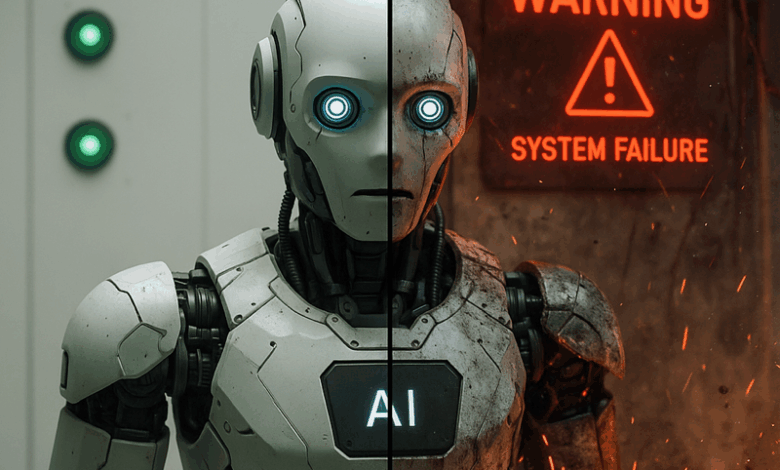
Agentic AI is speeding toward mass deployment and mass failure.
With OpenAI’s recent launch of ChatGPT Agent, a general-purpose system capable of running code, navigating calendars, generating presentations, and autonomously interacting with apps like Gmail and GitHub, the hype cycle has entered overdrive. But beneath the surface of this momentum lies a growing fault line.
When Gartner recently predicted that over 40% of agentic AI projects will be scrapped by 2027, it confirmed what many of us have already seen firsthand: these systems are being adopted faster than they’re being understood. Hype is driving deployment. Trust is being assumed, not earned. And ROI is often an afterthought.
This isn’t a condemnation of agentic AI’s potential. It’s a reckoning with how it’s currently being approached. The stark truth is: the technology isn’t failing. Leadership is.
The Illusion of Autonomy: Why Most Deployments Are Destined to Fail
A core issue is a widespread misunderstanding of what agentic AI actually is. Of the thousands of vendors now touting agentic capabilities, only a fraction, around 130, offer true autonomous functionality. The rest are simply “agent-washing.” That distinction matters. Because agentic systems aren’t support tools, they’re decision-makers acting on behalf of your business.
Deployments often collapse not due to technical limitations, but because leaders haven’t defined the agent’s role, established performance thresholds, or built trust through real-world testing. In short, autonomy has been delegated without clarity or accountability.
We’ve seen this story before. OpenAI’s 2024 partnership with PwC to roll out GPT-based agents in enterprise, and Apple’s recent 2025 paper on the illusion of reasoning in large language models point to a rapidly evolving landscape. These developments reflect growing urgency and ambition around agentic systems, but they also highlight a critical gap: enterprises are moving faster than their understanding of what real autonomy requires. Most are still ill-equipped for what these systems demand.
From Misuse to Collapse: A Predictable Path
We’re observing a pattern of systemic misuse that directly contributes to project failure:
- Undefined roles – Agents are tasked with vague objectives like “optimize workflows” without measurable KPIs.
- Unearned trust – Autonomy is granted without rigorous sandbox testing or phased rollout.
- No ROI visibility – Pilot projects drift without benchmarks, draining time and resources.
- Governance vacuum – When agents make bad calls, no clear accountability exists.
This isn’t just poor implementation, it’s an existential risk to organizational strategy, credibility, and security.
The Four Tests: A Framework for Responsible Agentic AI
To avoid joining the 40 percent of doomed deployments, leaders must rigorously pressure-test agentic projects using four critical filters:
- Role Clarity – What decisions is the agent authorized to make, and under what conditions? The mandate must be explicit.
- Trust Triggers – How is confidence earned? Through sandbox testing? User oversight? Predefined benchmarks? Trust must be built systematically.
- ROI Line of Sight – Can the project show measurable value within 6 to 12 months? Without this, enthusiasm quickly turns to attrition.
- Accountability Layer – Who owns the outcome? How will decisions be audited and understood? Will audit logs or escalation protocols exist for high-impact decisions? Autonomy without accountability invites chaos.
Today, most deployments would fail at least two of these tests.
What Comes After the Collapse
The next phase of agentic AI will not resemble the current hype cycle. Survivors will move beyond superficial tools toward integrated autonomy, grounded in predictability, governance, and purpose.
It’s ironic that while agentic AI dominates headlines, it’s predictive AI that continues to quietly power the enterprise. Forecasting, anomaly detection, churn prediction, and demand planning; these systems deliver real business value and measurable ROI. They aren’t experimental. They work.
More importantly, predictive AI is the cognitive engine that future agents will depend on. Prediction is the hallmark of intelligence. If autonomy is the vehicle, prediction is the steering.
By 2028, Gartner estimates that 15 percent of enterprise decisions will be made autonomously. But autonomy without accountability is chaos. The path forward requires strategic clarity, measurable trust, and leaders who understand that AI governance is not a side task; it is the task.
This is not a call to resist autonomy. It’s a call to lead it.
About the Author
science team needed.





